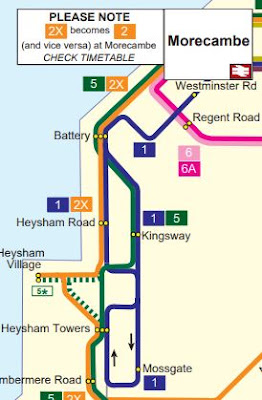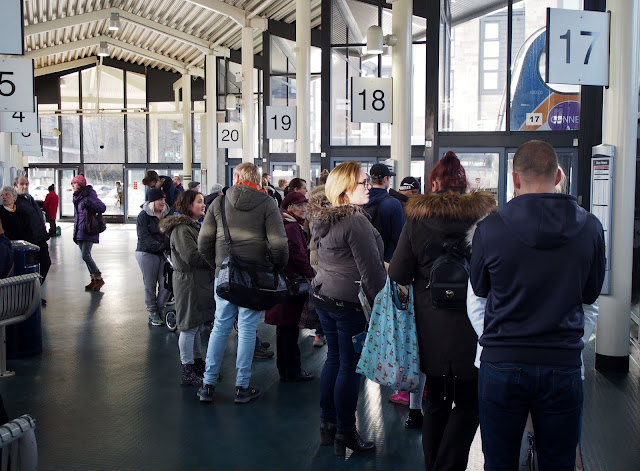Stagecoach's recent changes to routes and service numbers certainly had the potential to confuse a lot of passengers, but hopefully our explanation yesterday has made everything clear! (Read again here)
But there is one more change to come. Service 2, which since January has run from Lancaster University via Bowerham, the city centre, Scale Hall, Torrisholme and Bare to Morecambe is from 14th April to be given the most unlikely number of "100" !
At first glance the logic behind this is hard to see and the BUG did wonder whether the date should actually be somewhat earlier in April. With the exception of the 555, which no one at Stagecoach would dare to mess around with, and the associated 755 no regular Stagecoach service in Lancaster and Morecambe has a number higher than 81 and all the local "city" services are within the range of 1 to 18. So why "100" as many passengers will no doubt be asking, especially as we are told there will be no change to the route or times?
In what appeares to be a first in the history of bus numbering schemes (!) service 2 is being renumbered 100 in commemoration of the anniversary of a former bus company!
The company concerned is Ribble Motor Services that was set up in Preston in 1919, initially to operate services in the Preston area.
 |
| An early Ribble bus. (Photo courtesy of Ribble Enthusiasts Club) |
The company started operating services from Lancaster in 1926, with routes to Blackpool and Preston and the following year boosted its presence in the city by taking over Lancashire & Westmorland Motor Services giving it routes to Kirkby Lonsdale, The Kellets, Morecambe and Kendal. Other local operators were taken over in following years and eventually Ribble's operating area stretched from Liverpool to Carlisle.
 |
| A Ribble bus heading for Heysham under Carlisle Bridge in 1979 on what is now service 1 |
Ribble continued to operate buses in and around Lancaster until 1989 when it was sold to Stagecoach, which three years later bought the buses and depots of Lancaster City Transport to give it a monopoly of services in the city.
The Bus Users' Group is not aware of any other examples of bus services being numbered in commemoration of anniversaries such as this, but this is just one of several events being planned to mark the event including the publication of a new book on history of Ribble, a display of the company's preserved buses as part of a much-expanded Annual Bus Running Day in Morecambe at Spring Bank Holiday and an exhibition at the Harris Museum in Preston
It's not clear at this stage whether the renumbering is to be permanent or whether the 100 will revert to the 2 at some stage, which is likely to be the case as there appears to be no change planned to the 2X with which the 2 is interworked. (If it doesn't of course should we expect the 100 to become the 101 next year and 102 the year after that?).
Unfortunately there is every likelihood that some people will be confused by the change but as long as Stagecoach goes out of its way to explain to passengers what is happening - and why - the Bus Users' Group would welcome this gesture towards the memory of what was a well-loved and respected provider of bus services throughout the north-west for many years.








